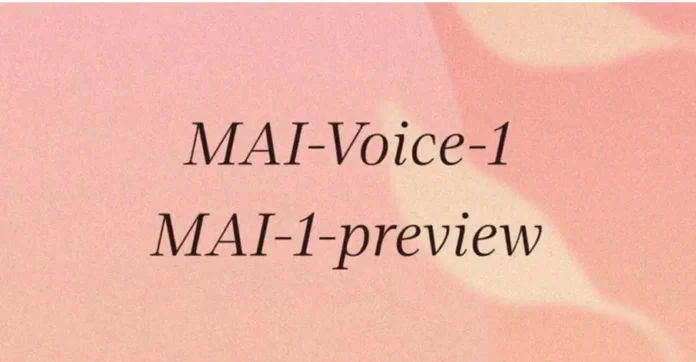
Microsoft’s artificial intelligence division has introduced its first proprietary AI models, signaling a major step in reducing reliance on OpenAI technology while expanding its own portfolio of consumer-focused AI tools. The two models—MAI-Voice-1 for speech generation and MAI-1-preview for text-based tasks—were officially announced on Thursday and are already being embedded into Microsoft’s Copilot ecosystem.
The highlight of the launch is MAI-Voice-1, a speech generation model optimized for speed and interactivity. Microsoft revealed that it can generate “a full minute of audio in under a second using only a single GPU,” making it significantly faster than most voice AI systems available today. The technology is already powering Copilot Daily, which narrates top news stories, and features that create podcast-style discussions to simplify complex topics. For hands-on experimentation, users can try MAI-Voice-1 through Copilot Labs, where they can input prompts, customize voice tone, and control delivery style.
Alongside it, Microsoft rolled out MAI-1-preview, a large-scale text model trained on roughly 15,000 Nvidia H100 GPUs. Built for instruction-following and conversational use cases, it is currently undergoing public evaluation on LMArena, an AI benchmarking platform where developers and researchers can test its performance. Early integrations into Copilot’s text-based functions are already underway. Microsoft describes MAI-1-preview as “a glimpse of future offerings inside Copilot,” suggesting it will soon play a bigger role in powering the company’s assistant services.
While Microsoft has long leaned on OpenAI’s models to drive Copilot, this release demonstrates its intent to build purpose-built, in-house AI systems. The company has emphasized that its strategy is consumer-first rather than enterprise-focused. Mustafa Suleyman, CEO of Microsoft AI, explained on the Decoder podcast: “My logic is that we have to create something that works extremely well for the consumer and really optimise for our use case… My focus is on building models that really work for the consumer companion.”
This consumer-driven vision frames Microsoft’s AI assistants as digital companions—tools designed to narrate news, explain difficult concepts, and interact naturally with users in everyday contexts. Reinforcing its long-term ambition, Microsoft noted in a blog post: “We have big ambitions for where we go next. Not only will we pursue further advances here, but we believe that orchestrating a range of specialised models serving different user intents and use cases will unlock immense value.”
With MAI-Voice-1 and MAI-1-preview, Microsoft is laying the groundwork for a Copilot ecosystem that reflects its own research and development. As testing expands, the success of these models will determine how effectively Microsoft can balance independence from OpenAI with innovation tailored to its consumer base.





